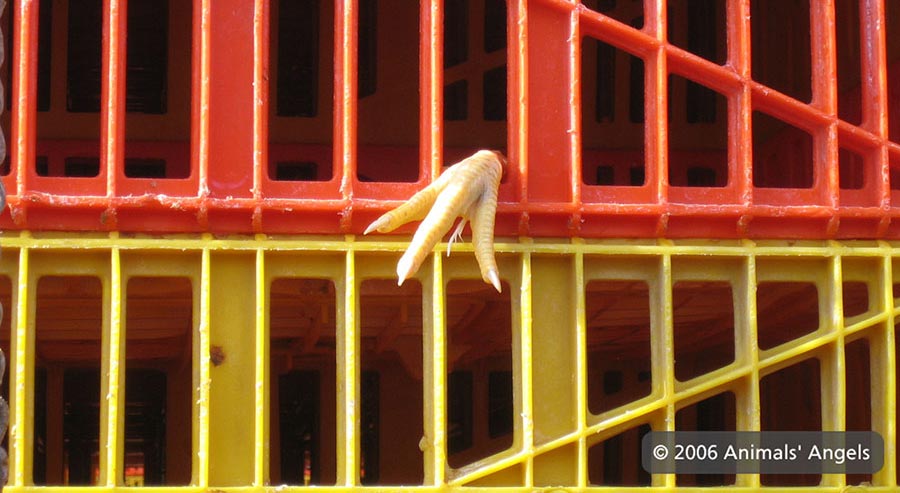
Photo by Twyla Francois from her story of
Jane – one tiny chicken foot. . . .
Most Chickens Never Get To Cross A Road
For the inestimable VALERIE
By R. David Drucker, October 16, 2020
When eighteen rubber tires meet the road,
a hum like a mighty ocean liner’s
reverberates off the distant hilltops
and an invisible bow wave washes
unsuspecting creatures out of the way
sparing them the fate of being flattened
unless, like cattle or men, they’re too large
and crunch against an overheated grill
already crocheted with a million bugs
constantly flung through long despairing nights
on some rock pock-marked common carrier.
In winter semi exhaust turns to frost
as it hits the endless asphalt ribbon
constructed when the weather was warmer
and headstrong roosters ruled chicks from the roost
many miles from this feather littered road
then the only way to the hatchery
and the only road leading out of it
for semi’s fully loaded sad burdens
still living except for a few dead ones
whose outrage and shock already killed them.
I, a spacey, prepubescent farm boy,
didn’t have to deal with any of this.
Content with hastily written essays
extolling the virtues of animal
husbandry, my heady sense of freedom,
responsibility for fostering
the welfare of a dozen or so chicks,
gave me hope I’d garner a Blue Ribbon
that would make my family proud of me
and the envy of other moms and dads
lacking the good sense to be my parents.
Nothing prepared me for semis rushing
down a feather lined Minnesota road
hatchery to factory slaughterhouse
nor suspect their rubber that met that road
would dispatch a million victims or more
monthly from Minnesota to market
so plentiful they drove their prices down
while my Rhode Island Red winning rooster
continued to wear his ribbon proudly.
The hum of hen laden semis grows dim
as another beautiful morning dawns.
Postscript to United Poultry Concerns
Thank you very much for your interest in "Most Chickens . . .". The poem was written on the basis of stories my late wife Mary used to tell me when she worked for a plastic netting company in the 1980s and 90s. One aspect of the job was to visit places where specialized netting manufactured by the firm she represented was used - blueberry farms that used "blueberry netting," citrus groves that used "orange netting," even a plant in Mancos, Colorado that bound bundles of twigs and branches together with netting.
All of these visits were pretty innocuous; however, the visits she always dreaded were those to poultry farms because of the conditions under which the chickens and/or turkeys were kept. The image of the access road lined with poultry feathers looking like snow banks was one she could never get over and I have never forgotten even though the last such visit she made was almost three decades ago.
BTW, Mary's pet as a preadolescent was Nicky Hokey, a chicken she rescued
from her step father who had broken the chicken's leg in an unsuccessful
attempt to kill him for dinner. She had him as a pet for a couple of years
until one day she came home from the movies. Nicky Hokey was gone, and
dinner that night was chicken. Despite her love for that bird and her
suspicions about that dinner, she remained an omnivore all her life.
– R. David Drucker, October 24, 2020